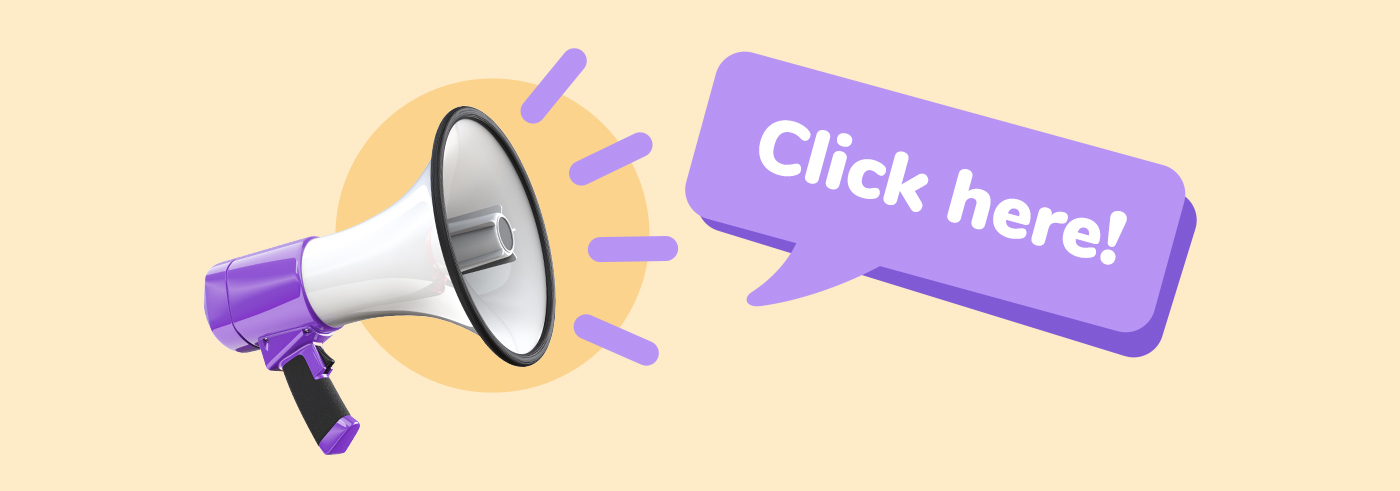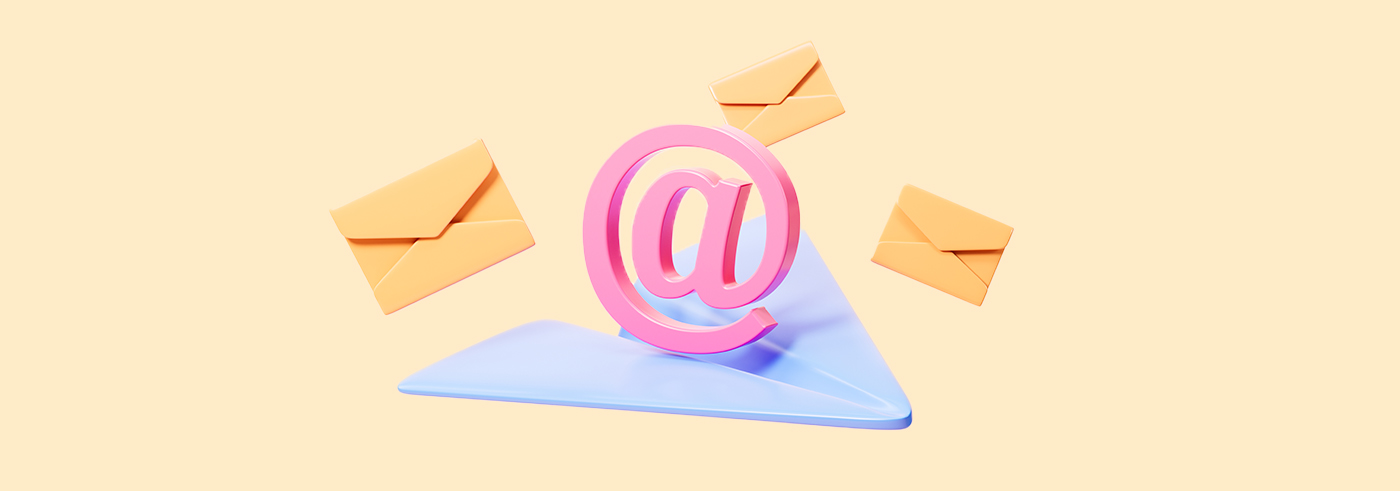Marketing is all about creating a demand for a product or service among your target audience by reaching out to them with innovative tactics for the same. Study any marketing email, display/ print ad, or jingles. You will observe that they are no mere words. Everything in them is fine-tuned to evoke a reaction from the customer.
Some may be more effective than others and some may have more potential to be better. Hence, marketers have been leveraging human psychology to get desirable reactions from their customers. In this article, we shall be highlighting 14 different tactics to use human psychology to send better marketing emails.
Table of Contents
- Psychology of email marketing - best practices
- Use the subject line to generate curiosity
- Generate urgency
- Using actionable email & CTA copy
- Color psychology in email marketing
- Using images of products in real-life use
- Hacking the eye scan method with email layout
- Asking small favors
- Product placement for emphasis
- Less converts more
- Include customer testimonials
- Create exclusivity with your products
- Attach a worth to your freebies
- Give them control with personalized content & feedback
- Charity begins with your customers
- Conclusion about email marketing psychology
Psychology of email marketing - best practices
Use the subject line to generate curiosity
While curiosity may kill the cat, the sense of exploring the unknown will always tempt humans to take the intended action. Subject lines are the first interaction your subscribers have with your email as soon as it lands in the inbox and it influences the email open rate. The thumb rule, while crafting the final subject line for your email campaign, is that it should be suggesting what the email is about. When you create subject lines that generate curiosity by only hinting what the email is about, the subscriber will be tempted to open the email if it strikes the chord.
We have two different examples of creating curiosity through subject lines that are complementary to each other.
One side we have Chubbies who uses cryptic subject lines to generate curiosity such as:
- PERFORMANCE MARCO (Polo shirt promotions)
- circling back (Roundup email)
- Buttery Soft Seersucker Shirts (Seersucker shirt promotions)
- We Saw You Looking... (Cart abandonment email)
On the other side, we have brands such as the Banana Republic that use subject lines that are straightforward:
- Not Canceled: Floral Styles
- Reintroducing The Tee Shop
- Limited time only! 30–50% off your favorite styles.
- Summer Stripe Staples
Generate urgency
Even though the course of millions of years has evolved humans to the current stage, there is still the presence of a primitive section inside our brains that takes over while taking instinctive decisions. Scientists have termed it the ‘fight or flight’ impulse while marketers call it “FOMO” (The Fear Of Missing Out). When someone is faced with decision making under time restrictions, they often opt for the ‘fight’ or the intended course of action. You can create urgency by the tone of the email copy, mentioning the deadline date, or limited volume in the email copy. You can also use elements such as a countdown timer. This is a very effective way to motivate your subscribers to take action. You should use it sparingly. People may get accustomed to the ‘push’ and gradually become immune to it.
In the example below by Ann Taylor, the sense of urgency is created in the hero image which makes the subscribers take notice. Additionally, the incentive for taking action increases the chance for people to take action.

Using actionable email & CTA copy
In conjunction with the previous point, your email copy is the meat of your email and should be engaging enough to make the subscriber take appropriate action. Unless your email copy is not actionable enough or doesn’t instruct the subscriber what is expected from them, the chances of them not engaging are really high. When you assert authority using your email copy, people are likely to follow what you convey in it. Use actionable words like “Avail the offer”, “Claim your coupon”, or “Buy this shirt” to communicate to the customers what is the next step.
In the email example below by Bergdorf Goodman, the email copy has actionable words such as “Save the Date”. The CTA copy is a straightforward “Shop Now” to clarify that on clicking the button, the subscriber shall be redirected to the purchase page.
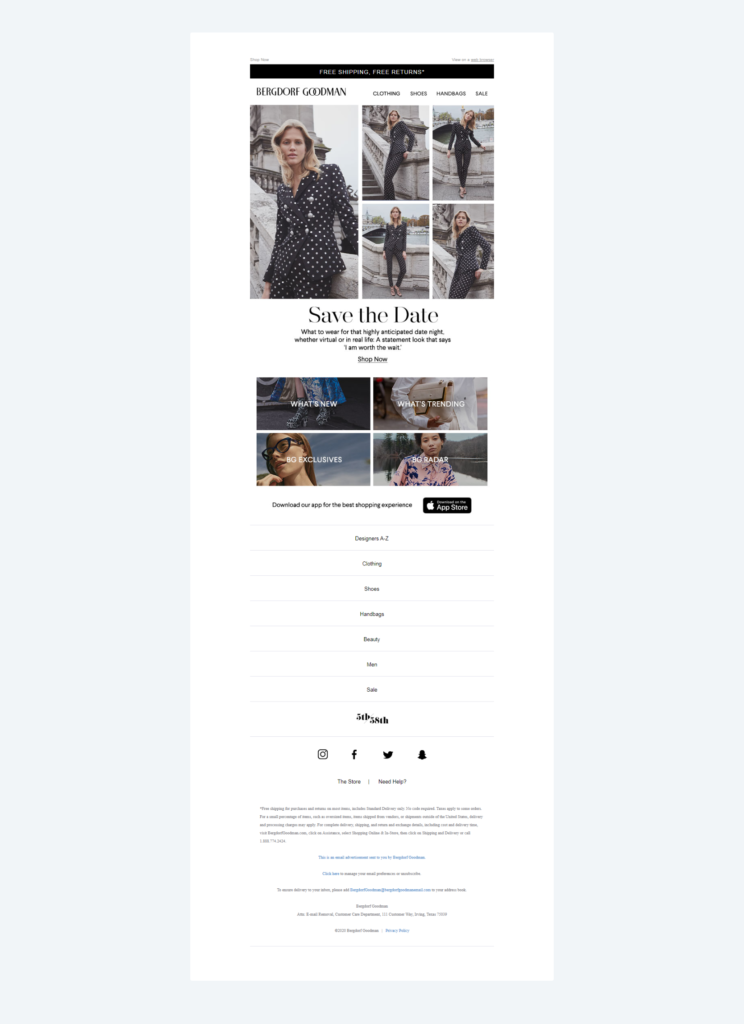
Color psychology in email marketing
Ever since HTML formatting was adopted for emails, marketers have been experimenting with colors, images, and styling to make the emails visually attractive. Colors are an important factor when it comes to designing email templates. There is a significant human psychology component associated with colors. Many researchers have studied the effect of colors on human psychology. Different colors have been observed to invoke certain emotions and convey certain traits in humans.
This doesn’t mean you need to create a psychedelic burst of colors in your emails. But using colors specified in your brand guidelines, you can draw specific actions from your customers. Some of the colors and the associated effect on humans are as below:
- Red: Energetic (alleviate heart rate)
- Orange: Aggressive (instigates a call to action)
- Blue: Trustworthiness (suggests security and trustworthiness)
- Green: Relaxing (Richness, calmness, and wealth)
- Yellow: Optimistic and youthful (warmth)
- Pink: Romantic and feminine
- Black: Powerful and slick (Premiumness)
- Purple: Soothing and calming (Royalty)
In the email example below by Sephora, the background in each section is a gradient of different colors that overall convey the feeling of calmness with warmth.

Another example of an email that has nailed the use of colors is the WallpaperStore. They have highlighted the basic colors and displayed products in specific colors below it.

Using images of products in real-life use
Images are another advantage of adopting HTML coding in emails. Images can be used to convey a thousand words and help you conserve precious email space. While email marketers have been using images in their emails for long, using the real-life photographs of products in use is a better trust-building method than using standard images of products. Using such images gives the subscriber an idea about the look and feel of the product without actually interacting with it.
In the example below by Pink, instead of showing the product images, they used photographs of actual people wearing their products, so that the customer might be able to relate better to the email.

Hacking the eye scan method with email layout
People, nowadays, don’t read an entire email. They choose to scan-through or skim across the email copy to filter out important information. The behavior is used by most email marketers to create email layouts that guide the eyes of the customers to places that the marketers want them to follow. This can be done by the placement of different elements or using visual cues. Visual cues involve using images with people’s eyes pointed towards an offer or call to action. Out of habit, the subscriber’s eyes also follow the same path to eventually land at the call-to-action.
Look at the example below. The person in the image is looking at the form and so your eyes also automatically are guided towards it.

Asking small favors
One of the most commonly used marketing tactics, even before emails, is asking small favors from customers and gradually increasing the intensity of favor. The trick in human psychology lies in getting your subscribers to comply with a small request. Once that is done, when you ask them for a bigger favor, they are more likely to oblige. Humans are conditioned to think that if they can manage a small favor they can surely manage the bigger commitment. How email marketers use this psychological tactic is by asking the website visitor to subscribe if they like what they are reading. When subscribed, it is an indication of their interest and when you ask them to whitelist you, there is a greater chance of them to comply.
Product placement for emphasis
Have you ever gone to purchase popcorn while watching movies? Ever wondered why the pricing is such that you are tempted to buy the biggest one available. This is a marketing tactic where the pricing of products is set in a way that the customer is under the assumption that they are saving money by buying the largest. In emails, you cannot set the price of the product you are marketing, but you can place products or use the email copy in such a way that the subscriber is tempted to click on specific products.
In the example below by Nasty Gal, the offer is ‘Up to 90% off’ but the typography and the flashing GIF makes the subscribers ignore the word ‘UPTO’

Less converts more
People want a choice in whatever they shop for. However, the more choices you provide, people may end up taking more time in making up their minds. The side effect of this would be the customer might be discouraged and drop out mid purchase. Instead, when presented with limited choices, the subscribers take less time to browse through and make up their minds faster. Display fewer products in your emails. Use a maximum of 3 CTA buttons in your emails to faster decisions and conversions.
In the example below by Teleflora, even though they may have many plants to display, they only displayed a handful of them along with appropriate CTA buttons. In the footer, they have featured a CTA button for the subscriber to browse other plants
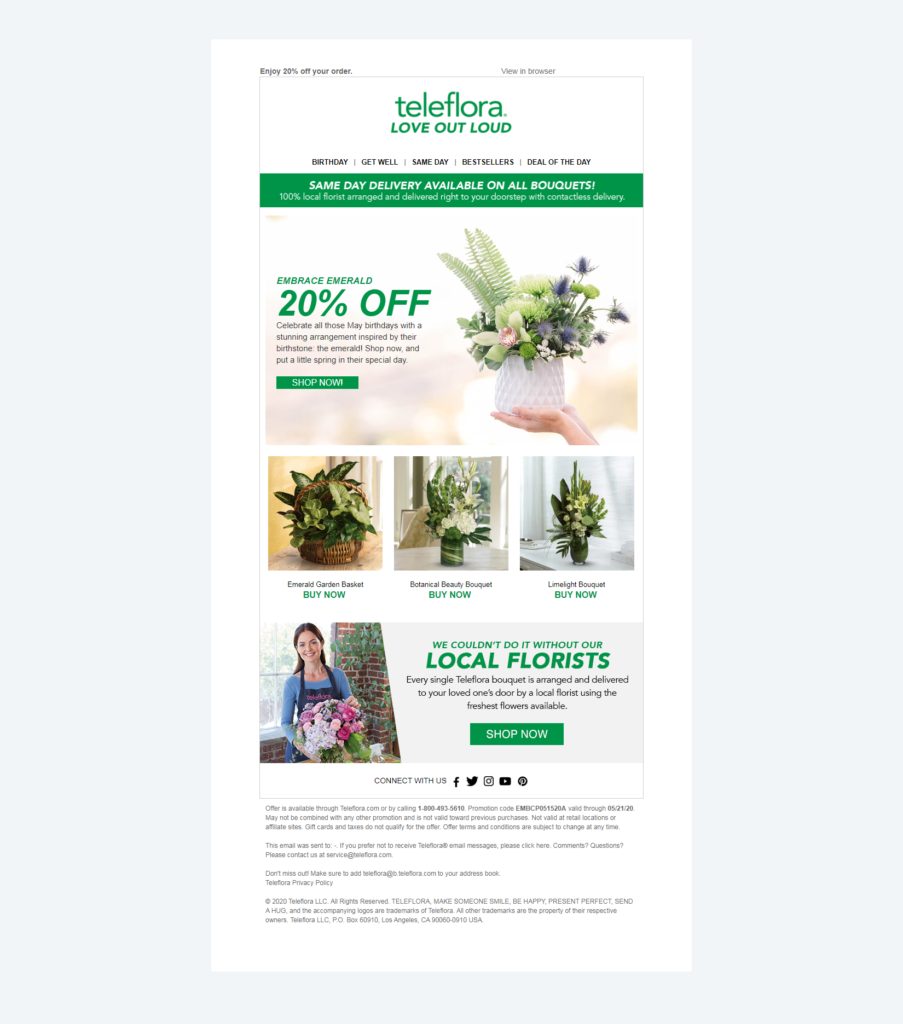
Include customer testimonials
People trust brands but trust the words of other customers more. This is why most brands tend to benefit from the word of mouth promotions. Customer testimonials are the digital versions of this. When you feature customer testimonials in your email, your customers are able to relate to the testimonials and gain trust. You can go a step further and display testimonials for products that your subscribers are browsing. Bose really nailed this tactic. They displayed products that were widely browsed by their customers and featured corresponding testimonials besides each product.

Create exclusivity with your products
Ever wondered why the hype around every new Apple launch that has people waiting in lines for days just to get their hands on the product? In a single word - Exclusivity. People don’t care if the OS is faster or better optimized. They care about the camera quality but there may not be a significant jump from the previous iterations. All they care about is the fact that owning an Apple product makes them a part of the exclusive group.
Replicating the same in your email copy by rewarding loyalty helps in further strengthening the bond you have with your customers. The following email by Davids Tea lists out the personal milestones of the customer and makes them feel exclusive. Sending such emails periodically motivates the subscribers to further engage with the brand.
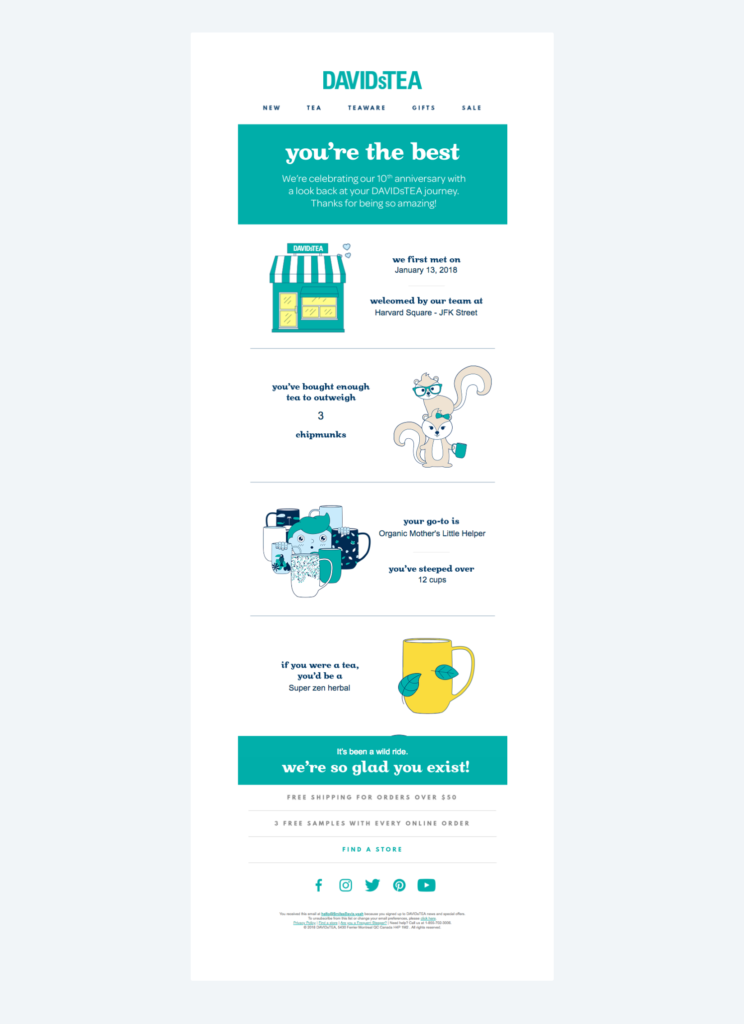
Attach a worth to your freebies
Every brand offers freebies but everyone knows that nothing is for free. When you associate a price to something you get for free, you tend to value it. Out of reciprocity, you may even return the favor. This is because humans psychology has the tendency to return the favor when they feel special. Incentivizing an offer to motivate someone to subscribe is the best example of this psychological tactic. Compared to when nothing is provided, a discount coupon on subscribing has a better chance of converting the recipient to make a purchase and it's a great email list management practice. Tattly uses this in their welcome emails while onboarding new customers.

Give them control with personalized content & feedback
While this might sound a lot like exclusivity, this human psychology email tactic is slightly different. People demand a personalized experience from brands in order to remain loyal. For them, a brand sending personalized content is out of their control and this gives a sense of ownership. As long as they feel that their voice matters, they shall love to be associated with the brand.
Another way to grant them control is by asking for their feedback. Asking for feedback not only helps you improve your services but your customer feels special by association. This email by ReelGood is a good example. The intention of the email and the email copy is to make the customer feel included.
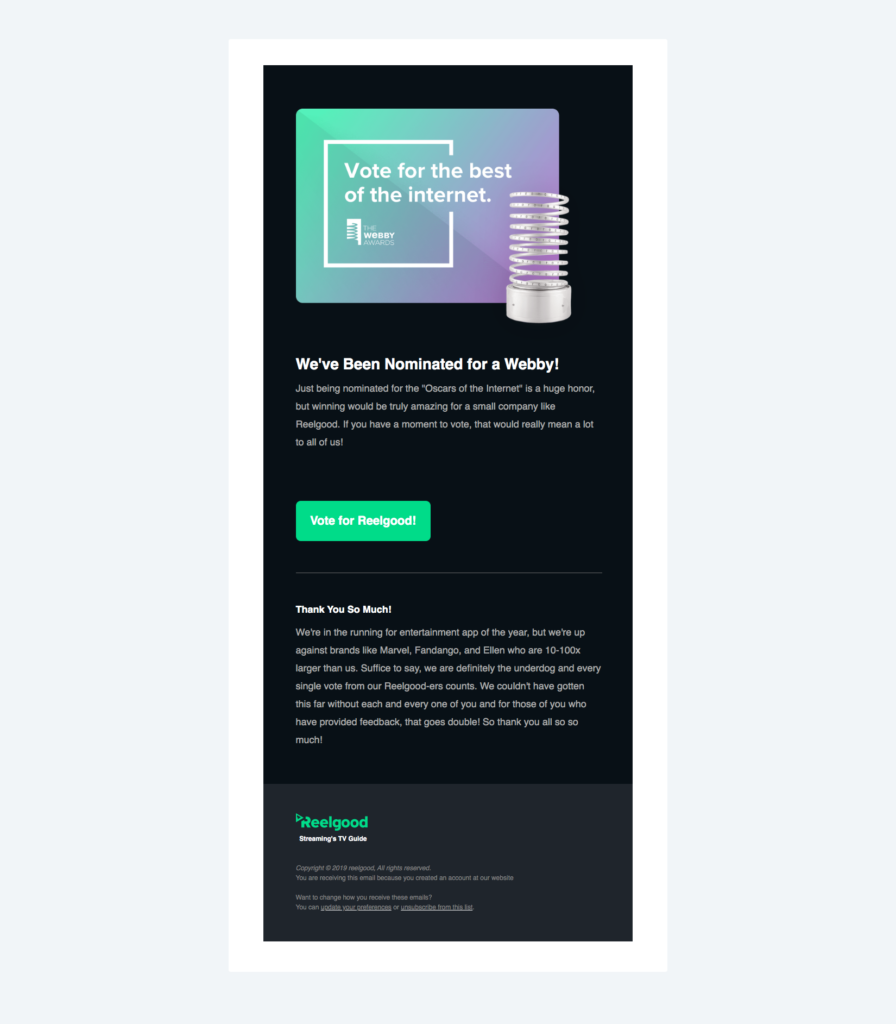
Charity begins with your customers
Toms is the best example of this and we included this tactic just to show how their marketing is using human psychology in their favor. The business model of Tom's shoes is that a third of their profits go into their in-house charity house. They donate shoes, glasses, and other necessities to the needy. This way, the customers get satisfaction from doing charity while buying for themselves. This feel-good effect would prevent the customers from jumping ships even if there is a case of bad customer experience. Owing to the ongoing pandemic, Toms has announced a new charity for Covid-19 relief. They made the announcement with a custom email as displayed below.

Conclusion about email marketing psychology
Out of all the different marketing channels, emails have the reachability, the possibility for hyper-personalization, and the ability to automate most of the emails without sounding robotic. When you use the above email marketing psychology hacks in your campaigns, you are sure to observe a sharp jump in customer engagement. But don’t follow us blindly, A/B test to find out which tactics work for you the most.





